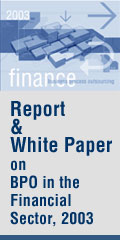|
|
Credit quality stabilising, but recovery will be slow, finds Crisil study
15 October 2009:
A study by CRISIL finds that Indian companies’ credit quality is beginning to stabilise, after being in
virtual free fall for 2008-09 (refers to financial year, April 1 to March 31). CRISIL’s Modified Credit
Ratio (MCR) has increased to 0.88 for the first half of 2009-10, after dropping to a nine-year low of
0.86 in 2008-09. Companies have easier access to funds, as a result of the government’s fiscal and
monetary easing, and positive stock market conditions; in addition, lower commodity prices have led
to lower working capital requirements.
In CRISIL’s opinion, however, a recovery in credit quality will at best be gradual, and may not
necessarily be smooth. According to Mr. Raman Uberoi, Senior Director, CRISIL, “There are
signs that both the monetary and fiscal easing and the lower commodity prices are temporary.
Additionally, unlike in the late 1990s, we see no prospect of a sudden and sustained upturn in
economic conditions to lift corporate performance. We can therefore rule out a sudden jump in
MCR of the kind we saw in 1999-2000, when MCR rose to 0.92 from 0.61.”
In the first half of 2009-10, about 5.9 per cent of the average outstanding ratings were downgraded;
this compares with a figure of 7.1 per cent in the immediately preceding six months. Similarly, about
1.3 per cent of the average outstanding ratings were upgraded in the first half of 2009-10, as compared
with only 0.2 per cent in the second half of 2008-09. The sharpest change in rating performance was in
the financial services sector, which saw 4 downgrades and 8 upgrades in the first half of 2009-10, as
opposed to 14 downgrades and no upgrades in the preceding six months.
Fiscal and monetary authorities have begun to explore an exit from the present supportive stance. The
timing and extent of these measures is likely to have a significant bearing on the pace and extent of
economic recovery after the current phase of stabilisation. The return of stability to the global
economy has also meant that commodity prices have retraced 25 to 35 per cent of their decline from
the peak levels of mid-2008.
According to Mr. Ajay Dwivedi, Director, CRISIL Ratings, “Access to
funds has eased considerably, but there is significant uncertainty with respect to exchange rates and
consumer demand. Large exchange rate movements can hit export-dependent sectors hard, and
domestic demand can be affected by rising prices in general and food prices in particular. We also
note that the Reserve Bank of India’s window for restructuring of bank assets helped many
companies avoid distress over the last 12 months. Looking ahead, we see a long and bumpy road for
recovery in corporate credit quality.”
Indian Banks are generally resilient under stress test
Federal Bank on watch on possible merger with Catholic Syrian Bank
Moody's places ratings of 13 banks on review
S&P revises outlook on 12 Indian banks to negative
S&P cuts India outlook to negative on unsustainable deficit
Fitch Affirms India’s Long-term foreign currency & local currency ratings
Moody's changes credit outlook for Indian banking to negative
Fitch affirms Indian Bank's ratings with long term stable outlook
India's Ratings Maintained by S&P on Growth Outlook
Tough year ahead for Asian banks as recession spreads
Outlooks on most banking systems in Asia Pacific turns negative
Greater refinancing risk for Asia-Pacific borrowers
Government measures should stabilize global banking markets
Global banking industry to see more restructuring & consolidation
Indian Banking sector challenged by domestic, not global, factors
CLICK FOR MORE FEATURES & STORIES
|
|


|


